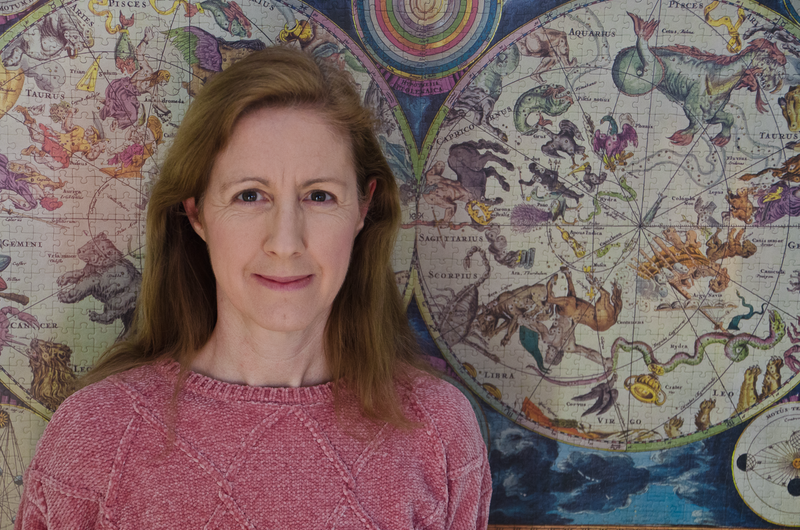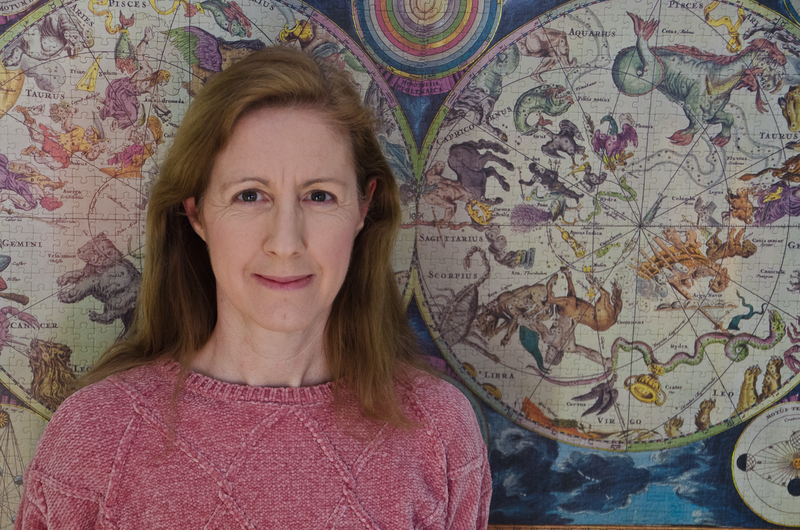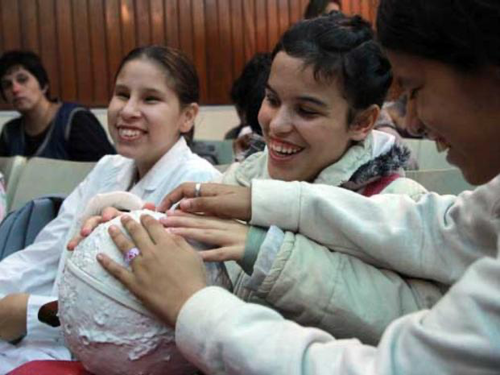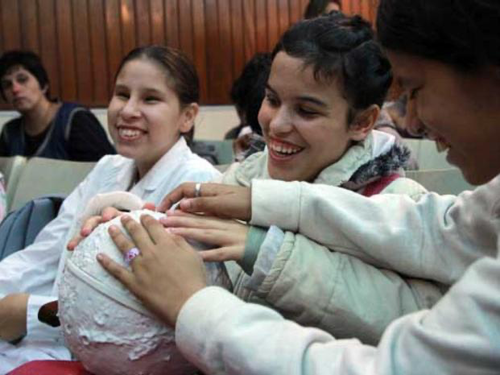Q&A: Putting the Sky in Everyone’s Hands
Amelia Ortiz-Gil first became interested in astronomy when she was four years old. She remembers reading a book on the Solar System filled with drawings of planets and moons and comets. The idea of those distant worlds fascinated her even though she couldn’t see them with her own eyes. “I decided that astronomy was my thing and that I would become an astronomer someday,” she says.
Ortiz-Gil stuck to that four-year-old’s plan and got a Ph.D. in astrophysics 23 years later. Her subsequent research career focused on intergalactic hydrogen and galaxy clusters—helping to make theoretical models of objects that are otherwise invisible to human eyes.
Now Ortiz-Gil works in outreach—sharing her love for astronomy with others—and she devotes much of her time to making astronomy accessible to people with disabilities. One of her main projects at the University of Valencia in Spain is developing tactile models of planets and constellations for blind people, which allow them to experience the wonders of our cosmic neighborhood. For that work, she was awarded the 2019 Europlanet Prize for Public Engagement with Planetary Science. Physics spoke to her about the importance of opening up science to all.
–Michael Schirber
How did you get involved in outreach for people with disabilities?
More or less by chance. I was working at the astronomical observatory of the University of Valencia on galaxy clusters when the institute started doing outreach activities with schools. I slowly got more involved, and then one day in 2005, a school for children with disabilities contacted us and asked if they could come and visit the observatory. The group that came was very diverse—with blind, autistic, and developmentally disabled children. It was hard meeting all those needs, but we were very happy with the results. The teachers were happy too and the kids even happier. So I decided to keep on doing outreach for people with disabilities.
One part of this outreach is The Sky in Your Hands, a planetarium show for the blind. Could you describe this project?
I was asked to coordinate the disability projects in Spain for the 2009 International Year of Astronomy. In searching for ideas, I learned about a planetarium show for the blind in Argentina. My colleagues and I contacted the show’s creator Sebastian Musso, and with his input we developed a tactile planetarium show. The show’s key element is a half-sphere made of resin with constellations in relief on the surface. Each blind visitor is given one of these half-spheres so that they can feel the shape of the constellations, while listening to the planetarium presentation.
Afterwards, somebody approached our group and said, “Hey, you have this sky, why don’t you make a tactile Moon?” We said okay and spent the next year developing a model with craters and other features. Since then, we have made tactile models of Mars, Venus, and Mercury. And we’re now working on a model of Earth.
What has been the reception?
Positive. One man said the planetarium show made him remember how he was able to see the night sky as a child before he lost his vision. Another woman was surprised by the round shape of the tactile Moon—she had assumed all her life that the real Moon was a flat disk in the sky.
Where have these models been used?
The planetarium show has run in Spain, Portugal, Belgium, and the US. And the tactile planets were part of exhibitions, like Inspiring Stars and the Science on Stage Festival. We also compiled the models into a single kit called A Touch of the Universe. Initially, we sent 30 kits to developing countries and under-served communities, paid for by the International Astronomical Union.
Since then, we’ve offered our 3D-printer templates to download for free, so that teachers and other interested individuals can print out the models for themselves. I received a message from a guy who had printed a model for his girlfriend. He planned to give her the Moon, literally. It was very romantic.
What do you hope that someone will take away from using these tactile models?
The main goal is inspiring interest in astronomy—and science in general—in everyone, regardless of their disabilities. I especially hope that young people with disabilities will realize that being a scientist is a reachable goal: If they want to learn more about astronomy, they can. And if they want to work in astronomy, they can do that too.
Why is it important to have outreach for people with disabilities?
It’s important to remove barriers to knowledge. If we open the doors to science, then everyone benefits. If an exhibit or a web page is made more accessible to people with disabilities, then it’s more accessible to everybody.
I think this outreach should start in the schools. We have to let kids with disabilities know that they can pursue a career in science. Otherwise they will close their minds to it. I like to hold up the example of Stephen Hawking. If he had become paralyzed earlier, say in high school, I don’t think he would ever have become a physicist. If we don’t provide access, we risk losing a huge pool of talent.
Michael Schirber is a Corresponding Editor for Physics based in Lyon, France.
Know a physicist with a knack for explaining their research to others? Write to physics@aps.org. All interviews are edited for brevity and clarity.







